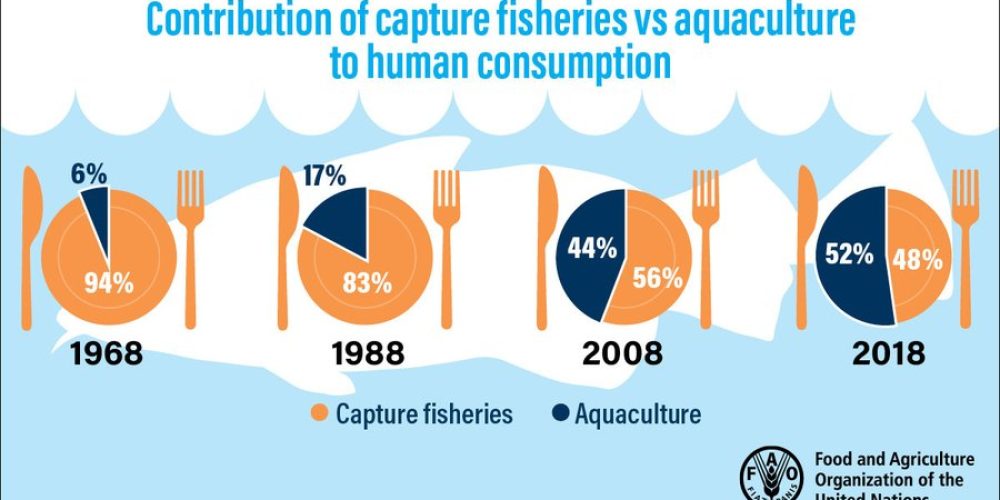Citing a 527% rise in global aquaculture production from 1990 to 2018, a new report affirms the trends driving WISHH’s work in aquaculture, including aqua feeds, in emerging and developing markets. The Food and Agriculture Organization’s State of the World’s Fisheries and Aquaculture (SOFIA) 2020 report states, “The priority should be to further develop aquaculture in Africa and in other regions where population growth will challenge food systems most.”
WISHH has an extensive track record in aquaculture that began in 2011 with the USDA-funded FEEDing Pakistan project based on WISHH identifying aquaculture as an opportunity to reduce Pakistan’s protein gap. WISHH’s work within the feed value chain resulted in an increased quality supply of soy-based aquaculture feed. Currently, WISHH leads the USDA-funded Commercialization of Aquaculture for Sustainable Trade (CAST) – Cambodia project designed to develop a lasting aquaculture industry in Cambodia where the country’s aquaculture industry demand for soybean protein is projected to reach 100,000 metric tons per year by 2030.
WISHH has also led trade teams of African and Asian aquaculture entrepreneurs to the United States and has conducted other work in the sector, including a new market assessment in Central America.
Released on June 8, 2020, the SOFIA report states global fish production is estimated to have reached about 179 million tons in 2018, with a total first sale value estimated at $401 billion. Aquaculture products accounted for 52% of fish for human consumption.
SOFIA pinpoints the valuable role of feed for the sustainable intensification of aquaculture. Some 34.2 percent of fish stocks are now fished at biologically unsustainable levels, according to SOFIA’s benchmark analysis.
Soybean meal and soy oil in fish and shrimp feeds reduce pressure on resources and improves sustainability and affordability of healthy farm-raised fish. Soy can replace from one-third to one-half of the fish meal in feeds for many farmed species, reducing pressure on wild fish resources.
Trade is also a key trend in SOFIA. “It is projected that about 36% of total fish production will be exported in 2030. In quantity terms, world trade in fish for human consumption is expected to grow by 9% in the project period, and to reach more than 54 million tons in live weight equivalent in 2030.
Read more HERE.

